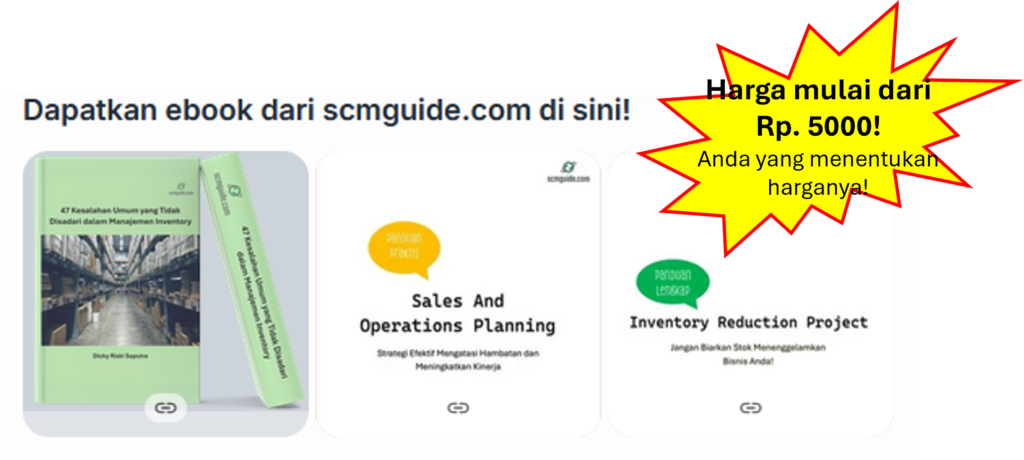Inventory management is important for all businesses, but it’s even more crucial for items with expiry dates like food or medicine. Mishandling these items can lead to big financial losses and waste.
In this blog post, we’ll talk about the special challenges of managing inventory with expiry dates and share some simple tips to help businesses avoid problems and work more efficiently.
Before we go further into this topic, don’t forget to follow my LinkedIn account. You’ll get more helpful insights on supply chain management there.
Table of Contents
Prioritize First-Expired-First-Out (FEFO) Method
Managing inventory with expiry dates is important for businesses to avoid losses.
One key principle is using the FEFO (First Expired, First Out) method. This means using or selling items with the earliest expiry dates first.
By doing this, businesses can reduce the risk of items expiring unused, maintaining product quality and maximizing value.
Implementing FEFO requires clear procedures for handling products based on their expiry dates and regular monitoring of inventory.
Prioritizing older stock helps optimize inventory turnover rates and minimize financial losses.
Overall, using the FEFO method is crucial for effective inventory management in industries where expiry dates matter.
Implement Effective Inventory Tracking Systems
Manually keeping track of expiry dates in inventory management is slow and prone to mistakes, risking financial losses from expired products. But with automated inventory management systems, businesses can solve this problem efficiently.
By using technology, these systems accurately track expiry dates, eliminating human errors and boosting productivity.
They also send real-time alerts as products near their expiry, allowing businesses to act fast with discounts or promotions to sell before items expire.
This proactive approach not only reduces the risk of losses but also maximizes revenue by seizing sales opportunities.
Automated inventory management systems offer more than just expiry date tracking.
They provide valuable insights into inventory levels, demand trends, and sales patterns, empowering data-driven decisions.
Integrating with other business systems like point-of-sale and supply chain tools, these automated solutions streamline coordination across departments, boosting overall efficiency.
Overall, adopting automated inventory management simplifies expiry date tracking and provides a comprehensive approach to managing inventory, enhancing profitability and competitiveness in today’s business world.
You might also like:
- 10 Strategies to Overcome Data Processing Challenges for Supply Chain Teams Lacking Expertise
- 4 Criteria for Suitable Containers to Ensure Food Safety in Shipping
Optimize Inventory Levels
Maintaining the right amount of inventory is crucial for items with expiry dates.
Having too much can lead to products expiring before they’re used, causing financial losses.
On the other hand, not having enough can mean missed sales opportunities and unhappy customers.
To find the balance, businesses should regularly forecast demand by looking at past sales, market trends, and seasonal changes.
This helps adjust how much inventory to buy, avoiding both excess stock and shortages.
Using a good demand forecasting system helps businesses manage their inventory better.
By matching inventory levels with expected demand, they can reduce the risk of products expiring while making sure customers get what they need.
Technology like inventory management software makes forecasting easier by providing real-time insights into inventory and demand.
By adjusting inventory based on demand forecasts, businesses can minimize financial risks and maximize profits when dealing with items that have expiry dates.
Establish Clear Storage and Handling Procedures
Properly storing and handling perishable goods with expiry dates is key to avoiding financial losses.
It’s crucial to store inventory in suitable conditions, like temperature-controlled environments or specific storage areas.
Keeping the right temperature and humidity levels preserves the quality and extends the shelf life of perishable goods, reducing the risk of them spoiling early and causing losses.

Alongside proper storage, it’s important to have strict handling procedures to minimize damage during transit and storage.
Clear protocols for packaging, loading, and transportation help products stay fresh throughout the supply chain.
Good handling practices also reduce waste and improve overall inventory management efficiency.
By prioritizing proper storage and handling, businesses can lower the risks linked to managing perishable goods with expiry dates, protecting profits and keeping customers satisfied.
You might also like:
- How to Create Standard Container Vanning Layouts
- 10 Must-Do Actions for Supply Chain Managers When Faced with an Inaccurate Sales Forecast
Train Staff on Inventory Management Practices
Teaching staff about managing inventory with expiry dates is crucial for good inventory management.
Comprehensive training sessions on key principles like FEFO help employees understand why using items with the earliest expiry dates first is important.
Teaching proper handling techniques is also essential to prevent damage and waste, especially for perishable goods.
Giving staff the knowledge and skills to use inventory management systems effectively is equally vital.
By encouraging continuous learning, businesses empower their teams to follow best practices and contribute to successful inventory management.
Educating staff not only ensures they follow best practices but also makes them feel responsible and accountable.
Understanding the impact of expiry dates on inventory management makes employees more careful in handling products.
Providing ongoing training and support keeps staff updated with industry standards and technology in inventory management systems.
Investing in staff education leads to better inventory accuracy, less waste, and happier customers in the long run.
By focusing on employee training and empowerment, businesses can improve their inventory management and grow sustainably.
Regularly Monitor and Evaluate Inventory Performance
Regularly keeping an eye on inventory performance is crucial for effective inventory management.
By tracking important metrics like sales trends, expiry rates, and inventory turnover, businesses can understand how well their inventory strategies are working.

Analyzing these metrics helps spot issues like slow-moving inventory or high expiry rates.
By fixing these issues quickly, businesses can make sure their inventory works better and avoid losses from expired or unused products.
Using insights from monitoring, businesses can adjust their inventory strategies. They might improve how they forecast demand, change how much inventory they buy, or adjust inventory levels based on sales and expiry rates.
Taking proactive steps like offering discounts for products close to expiry can also reduce the risk of losses.
By constantly checking inventory performance and using data to guide decisions, businesses can adapt to changes in the market, work more efficiently, and make more profit from inventory with expiry dates.
Conclusion
Handling inventory with expiry dates needs careful planning and constant attention.
By following the tips in this post, businesses can avoid losses from expired products and make their operations more efficient and profitable.
Key steps include using FIFO, using inventory tracking systems, keeping inventory levels just right, having clear procedures, training staff, and keeping an eye on performance.
These actions help manage inventory effectively in a time-sensitive setting.
I hope you find it helpful!
Please share this article with your colleagues so they can also benefit. For more insights on supply chain management, follow my LinkedIn account. You’re free to use all articles on this blog for any purpose, even for commercial use, without needing to give credit.

 by
by 


